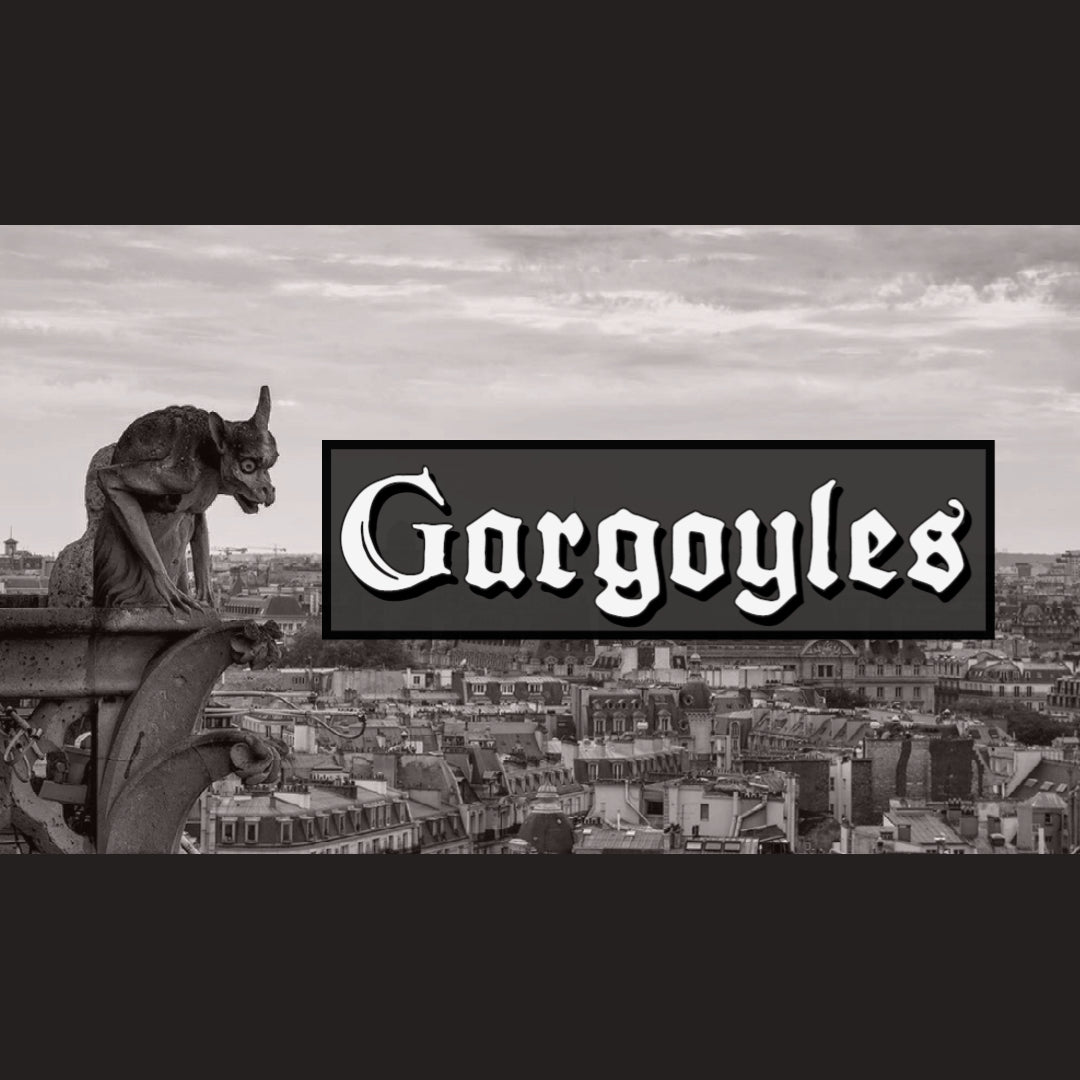
Gargoyles
Gargoyles were a fixture of Medieval and Gothic architecture, both for practical water drainage purposes, as well as for aesthetics. While Egyptians and Romans had also employed gargoyles as an early form of gutter or rain spout, they were particularly prolific from the 12th through the 17th centuries on European cathedrals.
As with other visuals utilized by the church, no aspect of gargoyles occurred by happenstance - their features meant to represent something that resonated with (or perhaps frightened) the local population.
Legend has it that in the 7th century, St. Romanus arrived in Rouen, a French village with a dragon problem. The priest promised to defeat the dragon if the townspeople converted to Christianity; he did but he couldn't destroy the head, thus it was mounted on the church to ward off other dragons.
Gargoyles and grotesques commonly used pagan imagery to more effectively convert illiterate populations. The gaping mouths provided a spout for water to run away from the foundation of the building, but also symbolized the devouring of evil. Nude gargoyles were meant to repress the worship of pagan deities. Friendly-looking examples were often inspired by church leaders or local authorities. Most of all, they were meant to convey protection, that nothing can harm you while inside the church.
While it's difficult to look positively toward something that looks so malicious, gargoyles are, at most, fear mongering protectors. While spiritually protecting the church-goer, they also had the essential duty of protecting the church structure, withstanding the elements for centuries.
To view this blog with additional photos, decor and furniture we have available click here!
Interested in reading our previous blogs? Click here!




Leave a comment
This site is protected by hCaptcha and the hCaptcha Privacy Policy and Terms of Service apply.